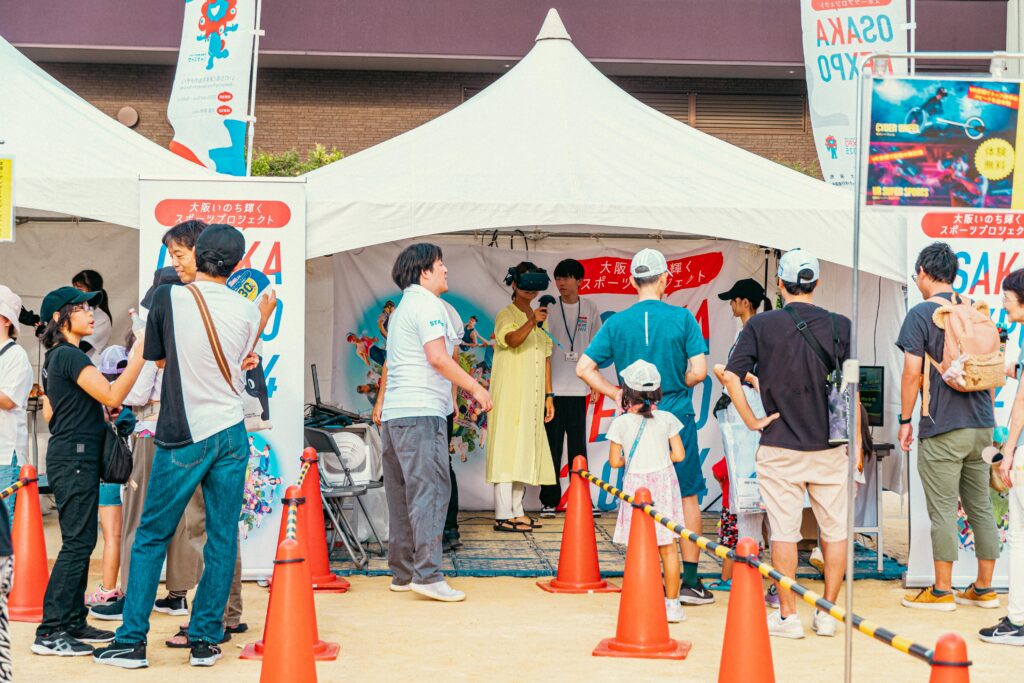From trade shows to pop-up events, live experiences still carry enormous weight in Japan. Where many foreign brands struggle is in the follow-up. Bringing the momentum from in-person experiences to the online space can be tricky.
In This Article
In this third part of our Phygital series, we’ll explain how to bridge offline event marketing in Japan to online activation with a cohesive funnel framework.
Why Offline Events Matter So Much in Japan
In Japan, it’s all about getting over the trust hurdle for overseas brands, and in-person events are the best places to tackle this issue. Experience equates to proof, and that tangible proof consequently leads to trust among Japanese consumers.
It also taps into the collective nature of Japanese society. The local population thrives on shared participation. Even simple things like limited-time department store exhibits or pop-up experiences in Shibuya can be major collective moments.

If you’re in a highly competitive space like beauty, electronics or luxury goods, taking advantage of trade shows and industry events, this is your opportunity to reinforce the quality and authenticity of your brand. It also lays the groundwork for transitioning potential customers to your online presence.
Show that You Know the Culture
Finally, as you have the opportunity to interface with the culture, this is a perfect chance to communicate your own form of omotenashi.
This is a level of hospitality that Japanese consumers expect, so show that you understand how to connect with your audience.
How to Guide the Customer Journey to Include Offline
In our previous entry, we discussed utilizing Out-of-Home (OOH) ads to entice viewers to follow your brand online. For trade shows and special events, you can actually go in reverse and end up back online when it’s time to convert. Here’s a short example of the stages below.

- Attract attendees: Utilize social media (or even incorporate OOH) to drive in-person attendance. QR codes and LINE invitations are trusted forms of outreach in Japan.
- Engage patrons: Further use QR codes for sign-ins, or interactive booths and games as other forms of opt-in.
- Nurture: Send follow-up messages or exclusive offers after the event via LINE to keep in touch with leads.
- Convert: Direct attendees to your online store after they’ve had a chance for an IRL interface.
Quick Tips
This is where omotenashi comes into play the most. Make every touchpoint above feel natural as opposed to transactional. Japanese consumers are keen to sniff out a sales funnel in disguise.
When trying for opt-ins, make the benefits clear, as Japanese consumers are very privacy-conscious with data sharing. Clear value builds trust. For gamified experiences, think of stamp rally ideas or AR treasure hunts. Japanese audiences respond extremely well to these types of interactions.
From One Touchpoint to a Lasting Relationship
When done correctly, physical event marketing in Japan leads to high brand recall and potentially long-term loyalty. We encourage overseas brands to not look at this measure as a one-off campaign. A more beneficial mindset is to approach events as an invitation into trust.
By connecting physical experiences with respectful, data-driven digital funnels, global brands can build stronger brand-consumer relationships rather than short-term audiences.
The secret isn’t automation or technology. Events are a more traditional form of marketing, and as such require the traditional Japanese spirit of omotenashi. If you can execute hospitality, empathy, and sincerity properly, your customers will stick with you through every step of the journey.
ICJ: Your Event Organizing Partner with Online in Mind
At ICJ, we have organized our own events, while also coordinating offline events for clients. We know how to get the conversation started in person, and how to keep it going across countless online verticals.
